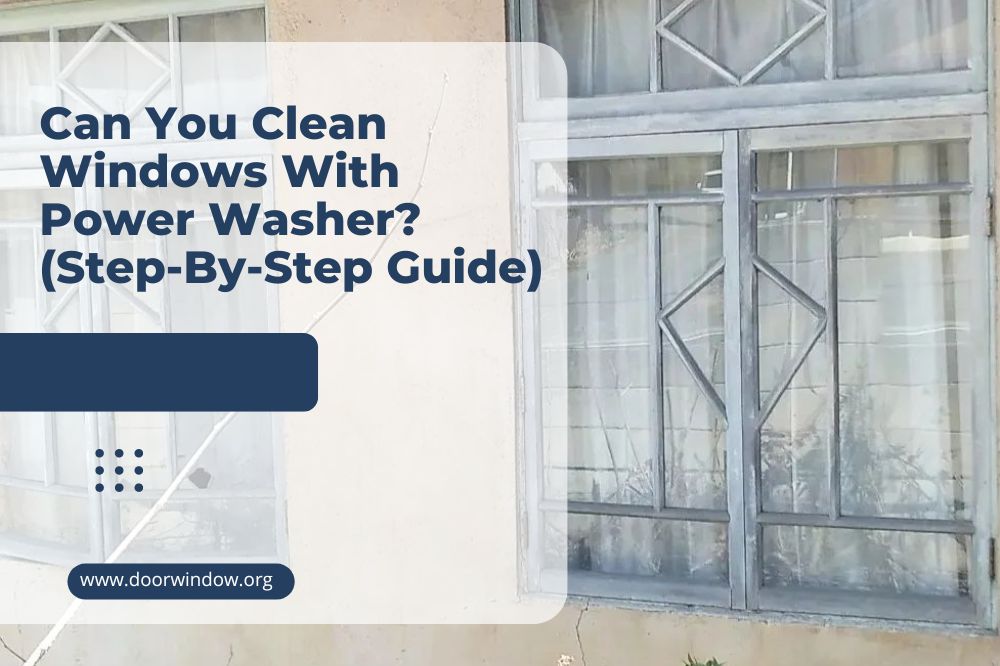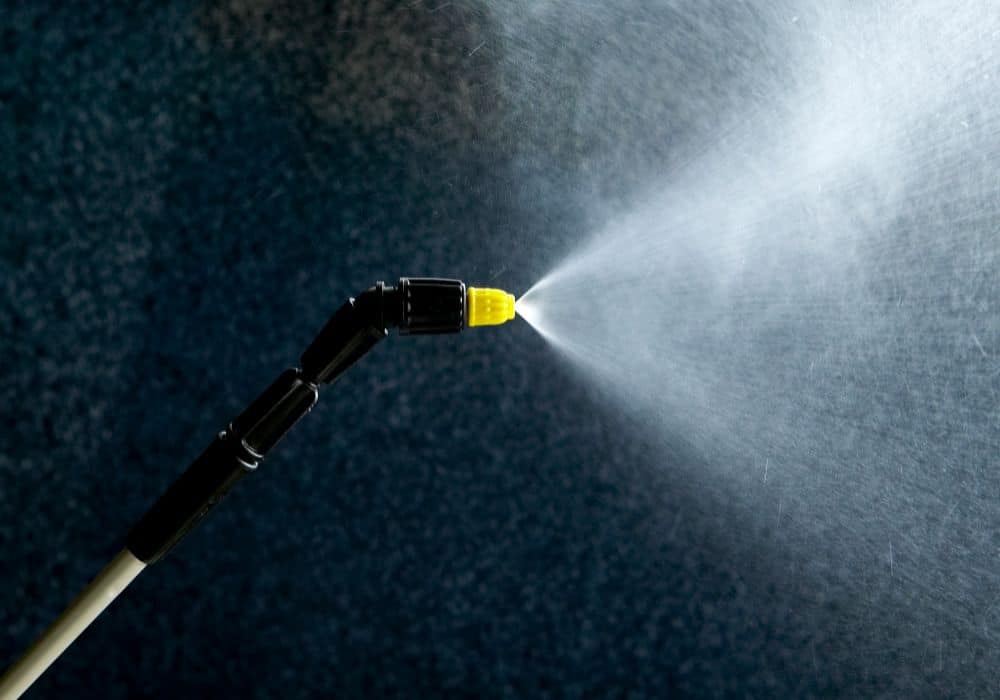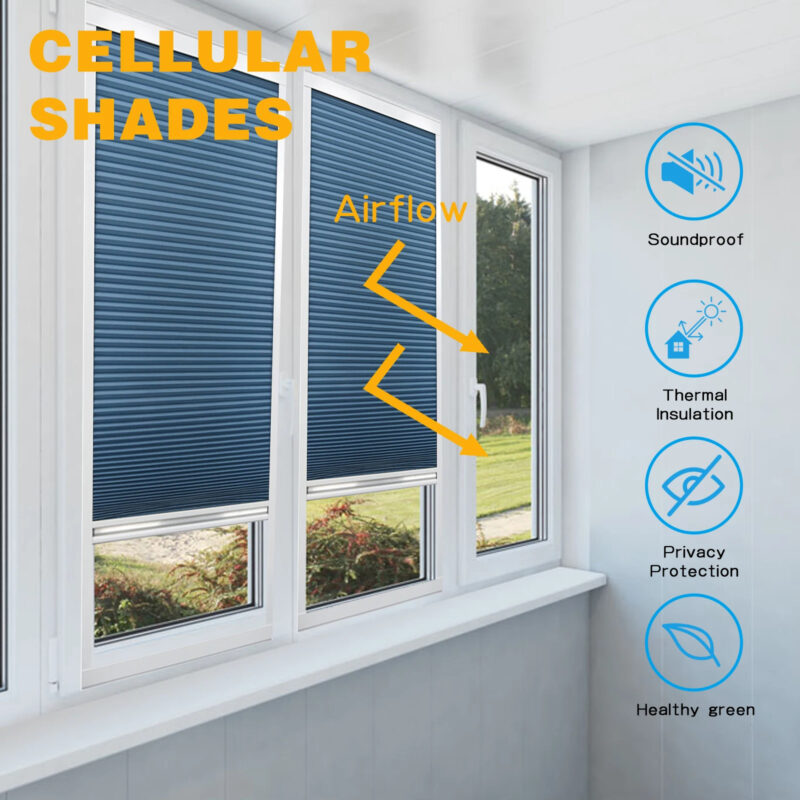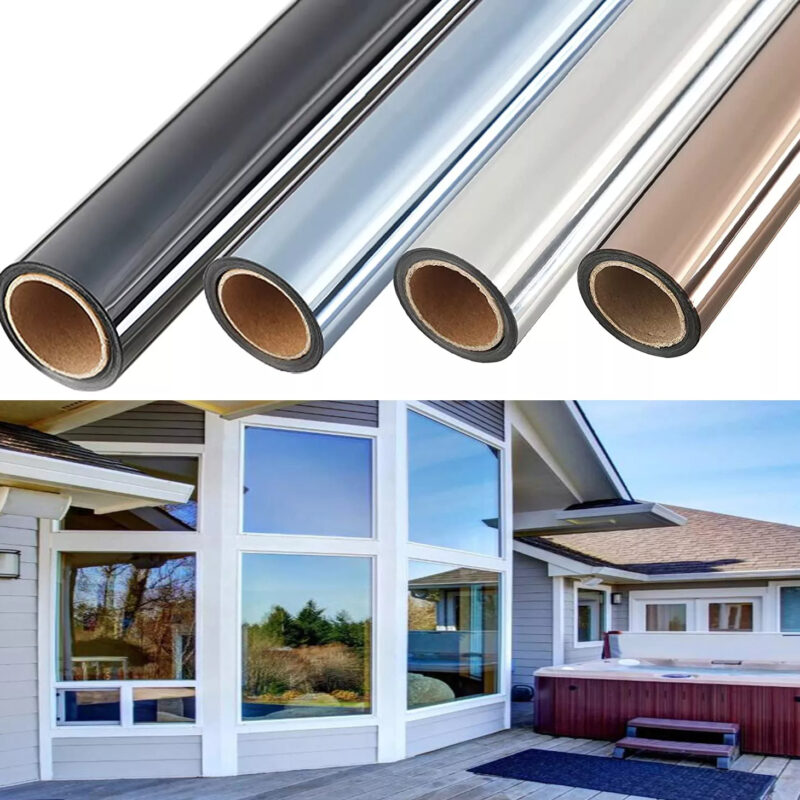Can You Clean Windows With Power Washer? (Step-By-Step Guide)

Washing windows may seem like a simple task, requiring only water, window-washing solutions, and a few rags. But if you want to wash your windows professionally, the traditional method is not the one for you.
Technology advances in all areas and for a long time, most people have had a pressure washer to wash their cars on weekends.
But… Should you use this tool to clean your home’s windows? What are the chances that the water pressure will break the windows? In what cases is it recommended to use a pressure washer for this type of task?
In this article, we will solve all your doubts and we will provide you with a step-by-step guide on what you should do and take into account if you decided to clean your windows with a pressure washer.
Can You Clean Windows With Power Washer?
What is pressure washing?
It is done with a pressure washer. With this tool, you can easily clean surfaces with high-weight water.
It is perfect for washing dirt accumulated over time in seconds. But if the objective is to clean windows then we must be very careful and take several precautions before using it.
However, this tool is ideal when you want to clean all the windows in the house. The jet power can easily reach second-story windows and clean difficult-to-reach areas.
Many people do not clean their windows regularly, so the task can be overwhelming if you use traditional methods. But with a pressure washer, you will save a lot of time and effort if you know how to do it correctly.
If you don’t know how to pressure wash windows, here we will guide you step by step.
How to Clean Windows With Power Washer
Step 1. Make sure your windows are suitable for this type of washing
Chips: Not all windows are ready for this type of washing. Before using a pressure washer, you should check if your windows are in good condition to withstand the washing process.
Check that the windows do not have any cracks in the glass. A crack, no matter how small, will enlarge when receiving pressurized water, and this is why your windows can break when being washed.
Window frames: Windows with wooden frames have less resistance to the passage of time if we compare them with those made of vinyl or acrylic.
In the case of rotten wood frames, it is not recommended to use a pressure washer, as the force of the water will aggravate the situation the water will seep through the cracks in the rotten wood, and after a while, you will have mold on your frames.
Cracks in the sealant: If your sealant has any bubbles or is cracked somewhere, you should fix it and allow a reasonable amount of time to pass before beginning the process of cleaning your windows.
Peeling paint: If the paint on your window is peeling, a pressure washer will only add to the problem. Sand your window frame or give it a fresh coat of paint before washing your windows.
Loose window: If your window is not well adjusted to the frame, it is most likely that due to the pressure of the water it ends up breaking. This is due to the wear of the putty. Invest time in securing your windows to the frame.
Step 2. Prepare the Washing Area
After checking that the windows are in good condition, it is necessary to prepare the work area so that the pressure water does not do any damage to other close elements of the house.
In the case of rotten wood frames, it is not recommended to use a pressure washer, as the force of the water will aggravate the situation.
It is a good idea to travel the spaces you are going to use to clean the windows and make sure they are totally clear.
Close all windows. If your windows are not hermetic, the high-pressure water will enter through any slit or space between the frames. It is better to place packing tape in the window frame slots.
If your windows have window panes or mosquito nets, you must take them out before starting the washing process. A power washer machine can tear the mosquito nets and you will have to invest extra money in buying new ones.
Step 3. Adequate security equipment
Preparing the work area is as indispensable as having the right tools to do an effective and safe job. Whenever you wear a pressure washing machine, it will be good that you have protective glasses and caps for the ears if your machine generates too much noise.
It also will be good to wear closed shoes or rain boots. Remember that however careful you are, you will end up wet, so if you are not washing your windows in hot weather, it is better to wear a waterproof for rain if you want to keep your clothes dry and without risks of contracting a cold.
Remember not to point to anyone with the water jet while the machine is on. Pressure water can generate injuries if not used with responsibility and good criteria.
Remember that it is not a toy, but a cleaning tool.
Step 4. Set the pressure machine
You should set your pressure washer to a low-pressure setting, this is usually between 1,500 and 2,000 psi. To be more cautious, you can lower the pressure even more, up to a range of 1300, and increase it if you see that you need more force.
In the case of rotten wood frames, it is not recommended to use a pressure washer, as the force of the water will aggravate the situation if it goes over 2000 psi. In this way, your windows are at great risk of breaking.
Step 5. Mixture for the cleaning solution
Popular cleaning solutions like Windex are the best option for washing your windows. Another option is to mix 2 cups of water with three tablespoons of vinegar and one teaspoon of window cleaner. If you need larger quantities, simply double or triple the recipe.
Step 6. Use an optimal spray nozzle
Another fundamental step so that your windows do not suffer damage in the washing process is to have the ideal spray nozzle. You will need a wide nozzle, 40 to 60 degrees.
Many brands have color-coded pressure washer nozzles to make them easier to use and distinguish. Wider nozzles, ideal for cleaning windows, are usually white.
Step 7. Keep your distance
It is recommended that you keep a distance of 3 meters and you can gradually get closer, but never get closer than 1.5 meters. The force of the spray of water at short distances can break the window panes and cause other damage.
The way you spray the windows is also important. Never stand in front of your windows, always sideways, and spray the water at a 45-degree angle.
Don’t stay too long pointing at the same place either, since your windows won’t hold the pressure. Constantly move the sprayer and find a comfortable angle that facilitates your work.
Step 8. Final touches
After washing your windows, there will surely be some soap stains left behind. You can finish rinsing the windows with water and a normal hose. Then you can pass a microfiber cloth so that no stains remain.
Tips and Tricks
- If you need to wash windows on the second floor, simply change the turbo nozzle, which shoots the water in a spiral. Using pressure washers on ladders or scaffolding is not recommended due to kickbacks.
- The ideal time to wash your windows is on a cloudy and mild day. Without much heat and much cold, snow, or rain. Hot or windy days can dry out the cleaning solution before you start the rinsing stage, leaving streaks on your windows. Spring is the perfect season of the year for this task.
- If the water in your house is full of minerals, connect a softener to the hose before starting the rinse. That way you will avoid stains and the windows will be shiny.
Conclusion
Washing your windows with a pressure washer is a task that must be executed with care, but by following all the necessary steps and taking due care, your work can be as good as that of a professional.
By following the advice in this guide, you can save a lot of money and even earn extra money by offering your services to neighbors, if you manage to master the technique perfectly.
Remember that safety comes first, so always have all the tools you need for this task on hand, always check your work area, take the time necessary to clear the area, and cover electrical outlets or cracks through which the water can enter.
With a good adjustment of the water pressure, a wide nozzle, and a good spray technique, which keeps the water jet always moving and without aiming it directly at the window, you will ensure the success of washing your windows.


















